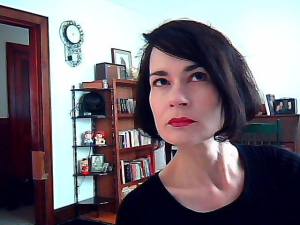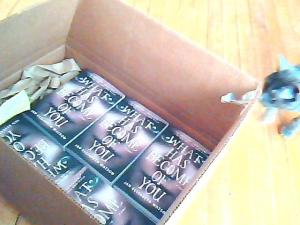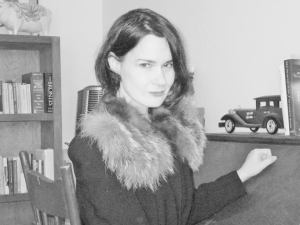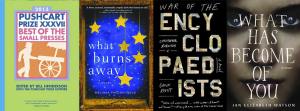
A new interview is up atBook Marketing Buzz Blog (contents pasted below).
http://bookmarketingbuzzblog.blogspot.com/2015/04/interview-with-author-jan-elizabeth.html

A new interview is up atBook Marketing Buzz Blog (contents pasted below).
http://bookmarketingbuzzblog.blogspot.com/2015/04/interview-with-author-jan-elizabeth.html

Although it hardly seems possible that the hardcover of What Has Become of You came out a year ago, the paperback edition hits bookstores on April 28th– and as you can see, I have a few copies to unload. To celebrate the paperback debut, I am giving away two free, signed copies by random drawing in exchange for an impartial four- or -five star review! (I kid, I kid– there is nothing required in exchange)
How To Enter: Send an email to janelizabeth.watson@gmail.com and put ‘Book Giveaway’ in the subject line by or before May 1st, 2015.
How Winners Will Be Selected/Notified: Entrants will be assigned a number and will be picked by random drawing on May 2nd. If you are one of the winners, I will send you an email notification and request your mailing address and if you would like your free copy inscribed to anyone in particular.
Bon chance!
Below is the rough transcript of my portion of our AWP Panel Talk; the version I presented was condensed, so this includes some exclusive bonus info. Hope you enjoy! (Below also, me in vintage fur that has its own history.)

When I think back to the role and influence that history, speculation, and invention have played in my own fiction, I have to go back into the trenches of my childhood, when I first started writing at age six.
Actually, I had begun writing even before that; by the age of three or so I was already penning stories on large pieces of paper and folding them up so that each had a folio and verso page. My earliest stories were written with pure imitative joy in a desire to duplicate the stories I love most, much in the way an amateur cook might try to duplicate a favorite restaurant recipe at home. My influences were Little House on the Prairie, old twentieth century school primers, and a series of somber-looking, crimson-colored books that contained all kinds of ghastly fairy stories—the story of “One Eyes, Two Eyes, Three Eyes,” where a girl is persecuted by her malformed sisters to the point where they slaughter her magical goat and bury its heart under a tree; or “The Red Shoes,” where a little girl has her legs amputated and goes up to heaven in order to avoid the horrible fate of interminable dancing. Thus inspired, I created my own stories with a similarly dark, old-fashioned bent, including one about two sisters whose shared mattress bled red every day, prosaically titled “Margery, Sylvia, and the Old Mattress.” It ended up filling about 200 pages of my spiral notebook when I was eight years old.
Later on, when I was in about sixth grade, I began to write a series of novels about my erstwhile celebrity crush—Simon LeBon from the British pop group Duran Duran. I had studied Simon in the way one might study a scientific construct, collecting article after article from Bop and Teen Beat magazine, and thereby had a solid biographical basis from which to work. But in my stories, Simon and I were girlfriend and boyfriend—involved in not a blissful, happy relationship but in one beset with soap operatic Sturm and Drang. Somehow I know that this would make for a better ongoing story.
Putting new twists on familiar elements pleased me terribly, and I suppose that is how many writers learn to love writing in this rather narcissistic way. I wasn’t thinking much about audience in those days. But with age and experience and the desire to publish, one hopefully can make the choice to marry consciousness of audience with one’s own writerly desires, and one way I found to achieve this was through the use of history, speculation, and invention. I also found that I’d had some real-life experiences, historical and personal, that I wanted to weave into my fiction in a non-literal way.
When I first started writing the very earliest version of what eventually became my first novel Asta in the Wings, I was a college undergraduate living a fairly solitary and interior life. I was slowly recovering from a severe and prolonged bout of anorexia which had brought my weight to as low as 60 pounds at my current height of five feet four, at one point. Because so many of my early years were blanketed with illness, I spent a great deal of time during the period of what I now think of as my convalescence quietly doing things that I loved: reading Victorian novels, particularly those featuring madwomen in the attic and enfants terrribles as well as essays on a series of strange subjects: The Black Death, old silent movie stars. Somehow, from all this, I imagined two young characters who, encouraged by a delusional, histrionic mother, lived their lives as shut-ins because they imagined a Black Plague raging outside. The first scene that I constructed from that story was a rough version of this one, with young Asta and Orion gleefully discussing the particular symptoms of this plague, rendered with a combination of historical accuracy and childlike embellishment: the swelling in the groin or neck, the livid spots that spread over the body like potato eyes, and the nosebleed that led to certain doom.
As for the children’s own health, their malnourishment was informed by my own anorexia, an affliction whose symptomology I knew not only from a personal level but through the many psychological casesbooks I’d read on the subject—and even a few tracts about starving saints and nuns who had visions as a result of their deprivation. Blending all this knowledge, Asta and Orion’s condition is described thusly in Asta in the Wings:
“While being thin did have its incoveniences—it hurt my bottom to sit on unpadded chairs, and I had to sleep with a pillow between my legs because my knees jabbed into each other—they served as daily reminders of our virtuousness and discipline, two traits that God himself would surely approve of, we thought.And I must admit to having a curiosity about all the bones that arose in me, bones most people don’t even know they have, cropping up with the immediacy of spring crocuses.”
With my second novel, What Has Become of You, I wanted to write a literary crime novel set in academia, and I had a variety of historical and personal resources at my disposal. Part of my Interest in the macabre, apart from the other earlier influences I have already mentioned, may have stemmed from a traumatic event that occurred in my hometown of Augusta, Maine when I was just fourteen years old. A girl who was one year ahead of me in school had been brutally murdered by a psychiatric hospital outpatient; as you can imagine, this rocked my small town, and while it seemed to explode the innocent ideals of many other kids around me, it somehow confirmed what I already knew was dark about the world, and I kept it in me like a seed that I knew would eventually grow into something.
Reading true crime became a guilty pleasure of mine, so it was rather easy to craft the serial killer who had cast a long shadow over my protagonist Vera’s youth. I knew that I did not want to write a conventional crime novel in the genre-novel sense, where every forensic detail is critiqued by ardent fans of the genre and where police procedural stuff has to be accurate to a tee; I wanted the crime elements to be loosely representational yet familiar enough for an audience to believe, which is the approach, really, that I take with most of my fiction. In this particular excerpt, Vera is reviewing files of serial killer Ivan Schlosser, including this excerpt from an interview:
Around four o’ clock every morning, when the last of Dorset’s barfies had simmered down and the farmers were not yet awake, Vera often found herself driven out of bed in an attenuated state of alertness. On this particular morning she was reading some of her files and transcripts relating to Ivan Schlosser, reviewing his confession of he murder of Heidi Duplessis.
Why would somebody deliver a voluntary confession? Was the question Vera had written at the top of her notebook page. Was there some kind of reward involved, real or imagined, in owning up to a crime that hadn’t been traced to him? Had Schlosser simply wanted to boast—to take credit for every one of his misdeeds? Looking over the transcripts of his interviews with Detective Leo Vachon, Vera could see no hint of remorse.
SCHLOSSER: I didn’t know I was going to stab her until my knife was at her throat (LAUGHTER), but once I started I knew it was the right thing to do. Didn’t expect her to scratch up my arms like that, though. She was a solid little thing. Big boobs, big shoulders. It took a few minutes before she went still. Then I took her into the bathtub and cut her up..
VACHON: What did you cut her up with?
SCHLOSSER: A tree saw.
VACHON: This was a tree saw you already had or one that you’d bought special?
SCHLOSSER: It was one that was in the basement of my apartment. I think maybe it was the landlord’s.I never saw nobody else use it. I know I never cut up a tree in my damn life. Just people.
What I would like to say in closing is simply this: How much of our fiction is speculative, inventive, and historical is a greatly personal choice, determined by what we love most and what we do best as writers. The burden for all of us who weave these kinds of mosaics together is still to create a story that has its own integrity, its own cohesion, and most of all, its own recognizable truth.

I have somehow managed to avoid the chaos that of the annual AWP (Association of Writers and Writing Programs) conference, but this year I am not only attending, but also presenting with a stellar panel of writers.
What: Presentation: History, Speculation and Invention in Long-Form Fiction
Where: Minneapolis Conference Center, Level 2, Room 200 D & E
When: 9:00 to 10:15 a.m.; Thursday, April 11th
Who’s Presenting?: Me, my girl Melissa Falcon Field, Christopher Robinson, Jaquira Diaz, and Sebastian Stockman.
What Are We Talking About?: Per the APA program, here’s a titillating overview:
Panelists will explore the use of literary mosaics to interface fiction and reality in order to transform stories of stories of suicide, poverty, war, and murder, divulging the tensions between history, speculation, and pure invention. Writers will discuss different methodologies of narrative form and discuss how research can both energize and betray readership when developing protagonists who share histories and incorporate insider perspectives to reveal less universal truths through long-form fiction.
Bonus: When I return from my trip, I will be posting an overview of my portion of the presentation, where I regale you with tales of starving nuns, serial killers who use tree saws, the particular horrors of the bubonic plague, and so many more fun things! Stay tuned.